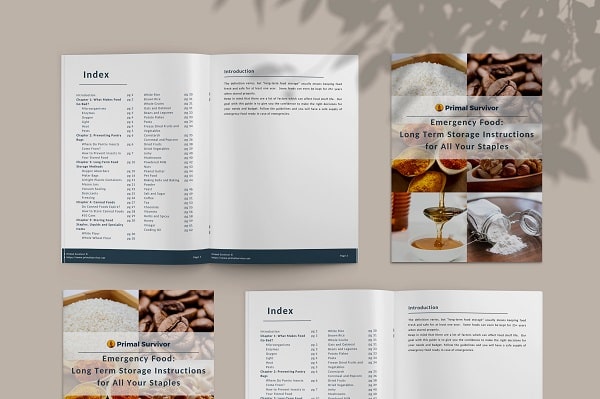Processing times for fish are substantially longer than when canning meat because they’re more susceptible to botulism, but you can process both fresh and saltwater fish. They require a minimum of 1 hour 40 minutes to process and must use the raw-pack method.
If you have any unsealed jars, do not attempt to reprocess fish. Otherwise, you’ll just end up with a pile of poor-quality mush.
Preparing Fish and Seafood for Canning
There is a variety of seafood that can also be pressure canned. When dealing with seafood, remove heads, tails, fins, and scales before canning.
Freshly caught fish must be bled and eviscerated within two hours of catching. Skin and bones are optional. For halibut, the bones must be removed.
Thoroughly wash fish in cold water and chill on ice until you’re ready to can them. Freshly caught fish require processing within 48 hours. With frozen fish, fully thaw them before processing.
Some home canners like to use smaller jars for fish, but their processing time remains the same. Tightly pack jars leaving 1″ headspace and seal without adding any liquid.
Process both half-pints and pints for 1 hour 40 minutes. The Alaskan Coop Extension is the only extension that offers a tested recipe for canning fish in quart-sized jars and includes a processing time of 2 hours and 40 minutes.
You may notice glass-like crystals that developed on salmon. This is normal and shouldn’t alarm you. These harmless crystals are magnesium ammonium phosphate and usually dissolve when heated.
Materials for Pressure Canning Fish
Pressure canning fish is much the same as canning other low-acidic foods. You’ll need the following items for each canning session:
- Pressure canner
- Canning utensils
- Jars, lids, and rings
- Salt (optional)
- Fish
Clams
Clams must be hot-packed. After washing the shells, steam the clams, remove the meat, and save the juice. Wash meat in salt water and rinse.
Follow the NCHFP guidelines for cooking your clams, fill jars to 1″ headspace, and cover with boiling clam juice. If you don’t have enough juice, add water.
Process half pints for 1 hour and pints for 1 hour 10 minutes.
Oysters
Oysters are processed similarly to clams, except they’re heated in a 400-degree oven to access their meat. They can be processed in half-pint or pint jars with 1″ headspace for 1 hour 15 minutes.
Shrimp
You won’t find shrimp listed on the NCHFP, but you can find it in Ball’s Blue Book, Edition 37, page 102.
For fresh shrimp, remove heads and tails immediately after catching them. Wash, rinse, and chill until ready to can. If frozen, completely thaw before processing.
Add shrimp to a saltwater brine and boil for 10 minutes. Drain, rinse, and let cool. Bring a second pot of water to a boil, or create a brine using 2 tablespoons of canning salt to 1 gallon of water.
Peel your shrimp and pack them into jars. Cover with water or brine, leaving a 1″ headspace. Process both half-pints and pints for 45 minutes.
Crab
The NCHFP recommends freezing crab for best quality because canning often results in an acidic flavor, but canning is an option nonetheless. Keep crabs alive until just before canning. Follow the NCHFP guidelines for cooking and removing crab meat.
Fill half-pint jars with 6 oz of crab meat or pint jars with 12 ounces. Add ½ tsp of citric acid or 4 tablespoons of lemon juice to half-pint jars. Likewise, add 1 tsp citric acid or 4 tablespoons of lemon juice to pint jars. Fill with hot water, leaving 1″ headspace.
Process half-pints for 1 hour 10 minutes and full pints for 1 hour 20 minutes.
Tuna
Although tuna can be raw- or hot-packed, precooking tuna helps remove most of the strong flavors. Follow the NCHFP guidelines for cooking and place cooked tuna in half-pint or pint jars.
For a raw pack, eviscerate tuna, remove skin, and cut out any bone, fin, and dark flesh. Rinse in cold water. Cut crosswise into desired lengths and pack into hot jars.
With both methods, add water or oil, leaving 1″ headspace. Process both pint and half-pint jars for 1 hour 40 minutes. Like salmon, you may see magnesium ammonium phosphate crystals form, but they are nothing to worry about.

